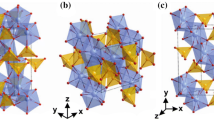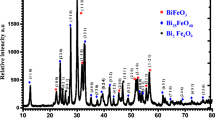Abstract
Many contaminants in water are not completely removed by conventional water purification techniques. So, the need of fast and efficient technique for water purification is required for efficient removal. Photocatalysis using low bandgap semiconductors is capable of detoxifying contaminated water. Herein, bismuth sulfide (Bi2S3) nanorods were synthesized using a solid-state reaction method and their photocatalytic performance was tested for the removal of Congo red dye from water. X-ray diffraction (XRD) results confirmed the formation of Bi2S3 with a crystallite size of 5.0 nm. Scanning electron microscopy (SEM) and transmission electron microscopy (TEM) images confirmed the formation of Bi2S3 nanorods with a diameter of 20–30 nm, length of 100 nm -150 nm and an aspect ratio of 5. Photoluminescence (PL) spectrum revealed the bandgap value of 2.47 eV. The specific surface area calculated using Brunauer–Emmett–Teller (BET) of Bi2S3 nanorods was 94.44 m2/g and pore volume was 0.158 cm3/g. The photodegradation of toxic Congo red was performed using Bi2S3 nanorods under UV irradiation. Photodegradation efficiencies up to 87% for Congo red dye were observed within 90 min. The pseudo-first-order (PFO) kinetic model was best fitted to understand the kinetics of photocatalysis. For Bi2S3 nanorods photocatalysts, the apparent rate constant value was 0.01573/min with a 0.997 correlation coefficient value.







Similar content being viewed by others
Availability of data and material
The data sets supporting the conclusion of this article are included within this article.
References
S. Bolisetty, M. Peydayesh, R. Mezzenga, Chem. Soc. Rev. 48, 2 (2019)
N. Singh, G. Nagpal, S. Agrawal, Environ. Technol. Innov. 11, (2018)
M.L. Yola, T. Eren, N. Atar, S. Wang Chem. Eng. J. 242, (2014)
V.K. Gupta, S. Agarwal, A. Olgun, H.İ. Demir, M.L. Yola, N. Atar, J. Indus. Eng. Chem. 34, (2016)
N. Atar, A. Olgun, F. Çolak, Eng. Life Sci. 8, 5 (2008)
K.P.Y. Shak and T.Y. Wu, Chem. Eng. J. 256, (2014)
X. Li, Y. Chen, X. Hu, Y. Zhang, L. Hu, J. Membr. Sci. 471, (2014)
K. Sivagami, B. Rajasekhar, S. Mujahed, I.M. Nambi, A.K. Rajan, J. Hazard. Toxic Radioact. Waste. 25, 2 (2021)
J. Gong, C. He, J. Zhang, L. Wang, Res. Chem. Intermed. (2021).
M.L. Yola, T. Eren, N. Atar, Chem. Eng. J. 250, (2014)
H. Röder, E. Hahn, H. Brune, J.-P. Bucher, Nature 366, 6451 (1993)
Z. Tan, S. Chen, X. Peng, L. Zhang, C. Gao, Science 360, 6388 (2018)
A.B. Prevot, A. Basso, C. Baiocchi, M. Pazzi, G. Marci, V. Augugliaro, L. Palmisano, E. Pramauro, Anal. Bioanal. Chem. 378, 1 (2004)
Y. Huang, F. Sun, H. Wang, Y. He, L. Li, Z. Huang, Q. Wu, C.Y. Jimmy, J. Mater. Chem. 19, 37 (2009)
R. Chen, M.H. So, C.-M. Che, H. Sun, J. Mater. Chem. 15, 42 (2005)
Q. Wang, Z. Liu, R. Jin, Y. Wang, S. Gao, Sep. Purif. Technol. 210, (2019)
L. Song, S. Zhang, C. Chen, X. Hu, Q. Wei, Chem. Eng. J. 171, 3 (2011)
S. Bera, S. Ghosh, R.N. Basu New J. Chem. 42, 1 (2018)
J. Lu, Q. Han, X. Yang, L. Lu, X. Wang, Mater. Lett. 61, 16 (2007)
S. Batool, S. Hassan, Z. Imran, M. Rafiq, M. Ahmad, K. Rasool, M. Chaudhry, M. Hasan, Catal. Commun. 49, (2014)
H.-C. Liao, M.-C. Wu, M.-H. Jao, C.-M. Chuang, Y.-F. Chen, W.-F. Su, Cryst. Eng. Comm. 14, 10 (2012)
J.L. Chen, V. Nalla, G. Kannaiyan, V. Mamidala, W. Ji, J.J. Vittal, New. J. Chem. 38, 3 (2014)
F. Wei, J. Zhang, L. Wang, Z.-K. Zhang, Cryst. Growth. Des. 6, 8 (2006)
H. Wang, J.-J. Zhu, J.-M. Zhu, H.-Y. Chen, J. Phys. Chem. B 106, 15 (2002)
S.C. Ameta, R. Chaudhary, R. Ameta, J. Vardia, J. Indian Chem. Soc. 80, 4 (2003)
G. Borghs, K. Bhattacharyya, K. Deneffe, P. Van Mieghem, R. Mertens, J. Appl. Phys. 66, 9 (1989)
M. Anpo, M. Che, in, Adv. Catal. (1999), pp. 119–257
H. Zhu, R. Jiang, J. Li, Y. Fu, S. Jiang, J. Yao, Sep. Purif. Technol. 179, (2017)
S. Kumar, S. Sharma, A. Umar, S.K. Kansal, Nanosci. Nanotechnol. Lett. 8, 3 (2016)
T. Wu, X. Zhou, H. Zhang, X. Zhong, Nano Res. 3, 5 (2010)
C. McCullagh, J.M. Robertson, D.W. Bahnemann, P.K. Robertson, Res. Chem. Intermed. 33, 3 (2007)
R.I. Bickley, L.T. Hogg, Res. Chem. Intermed. 33, 3 (2007)
J. Ma, J. Ren, Y. Jia, Z. Wu, L. Chen, N.O. Haugen, H. Huang, Y. Liu, Nano Energy 62, (2019)
R. Mohammed, M.E.M. Ali, E. Gomaa, M. Mohsen, J. Environ. Chem. Eng. 8, 5 (2020)
B. Ren, W. Shen, L. Li, S. Wu, W. Wang, Appl. Surf. Sci. 447, (2018)
S. Yao, F. Qu, G. Wang, X. Wu, J. Alloys Compd. 724, (2017)
S. Kumar, S. Sharma, S. Sood, A. Umar, S.K. Kansal, Ceram. Int. 42, 15 (2016)
S. Sharma, N. Khare, Adv Powder Technol. 29, 12 (2018)
S. Sharma, N. Khare, Colloid Polym. Sci. 296, 9 (2018)
Acknowledgements
The author “S S Batool” acknowledges COMSATS University Islamabad
Funding
This work was supported by the National Key Research and Development Program of China (Grant No. 2018YFB2200500), the National Natural Science Foundation of China (Grant no. 61974170,61934007,61675195), the Opened Fund of the State Key Laboratory of Integrated Optoelectronics No. IOSKL2018KF17, the Beijing Municipal Science and Technology Commission project (Grant No. Z191100004819011).
Author information
Authors and Affiliations
Contributions
The author AK initiated the research under supervision of SSB and CL. NA and MA did photocatalysis experiment. JA, SH and XZ helped in analyzing the data.
Corresponding authors
Ethics declarations
Conflict of interest
The author declare that they have no conflict of interest.
Additional information
Publisher's Note
Springer Nature remains neutral with regard to jurisdictional claims in published maps and institutional affiliations.
Rights and permissions
About this article
Cite this article
Khalid, A., Akhtar, N., He, K. et al. Bismuth sulfide photocatalysis water treatment under visible irradiation. Res Chem Intermed 47, 3395–3409 (2021). https://doi.org/10.1007/s11164-021-04471-1
Received:
Accepted:
Published:
Issue Date:
DOI: https://doi.org/10.1007/s11164-021-04471-1




